Physical Therapy
Physical Therapy
Physical therapy are a group of modalities and techniques used by a therapist to improve the health and well being of a patient. There are numerous physical therapy modalities and techniques.
Electrical Stimulation (IFC / EMS)
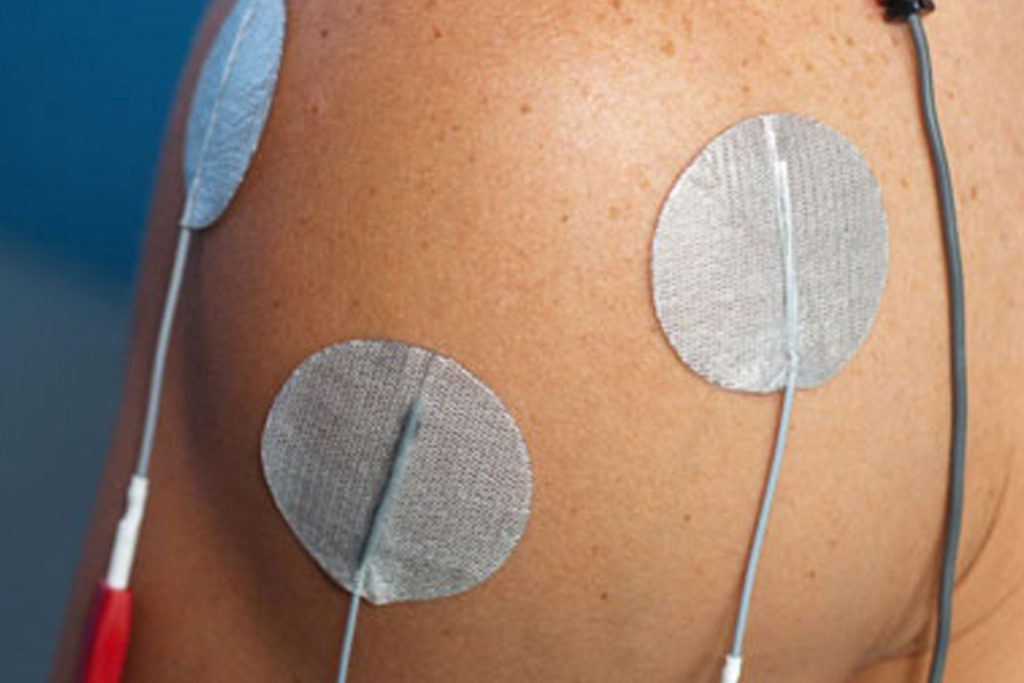 Electrical stimulation uses an electrical current to cause a single muscle or a group of muscles to contract. Placing electrodes on the skin in various locations can recruit the appropriate muscle fibres. Contracting the muscle via electrical stimulation helps strengthen the affected muscle. The treatment provider can change the current setting to allow for a forceful or gentle muscle contraction. Along with increasing muscle strength, the contraction of the muscle also promotes blood supply to the area that assists in healing.
Electrical stimulation uses an electrical current to cause a single muscle or a group of muscles to contract. Placing electrodes on the skin in various locations can recruit the appropriate muscle fibres. Contracting the muscle via electrical stimulation helps strengthen the affected muscle. The treatment provider can change the current setting to allow for a forceful or gentle muscle contraction. Along with increasing muscle strength, the contraction of the muscle also promotes blood supply to the area that assists in healing.
Ultrasound
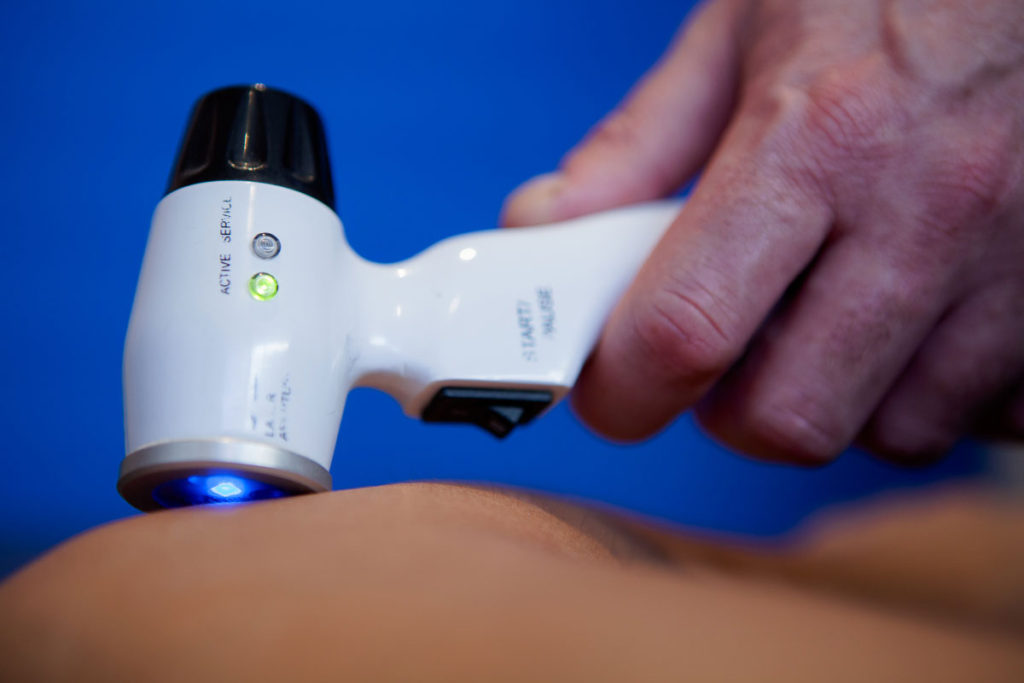

A therapeutic treatment using high frequency sound waves administered in the region of soft tissue injuries. Sound vibrations, as fast as a million times per second, penetrate the tissues deep in the body, creating a heat response. These vibrations and heat help break down adhesions and scar tissue. Ultrasound stimulates healing without irritation. It is also important to perform ultrasound before certain soft tissue therapies.
Exercise Rehabilitation / Post Surgical Rehab
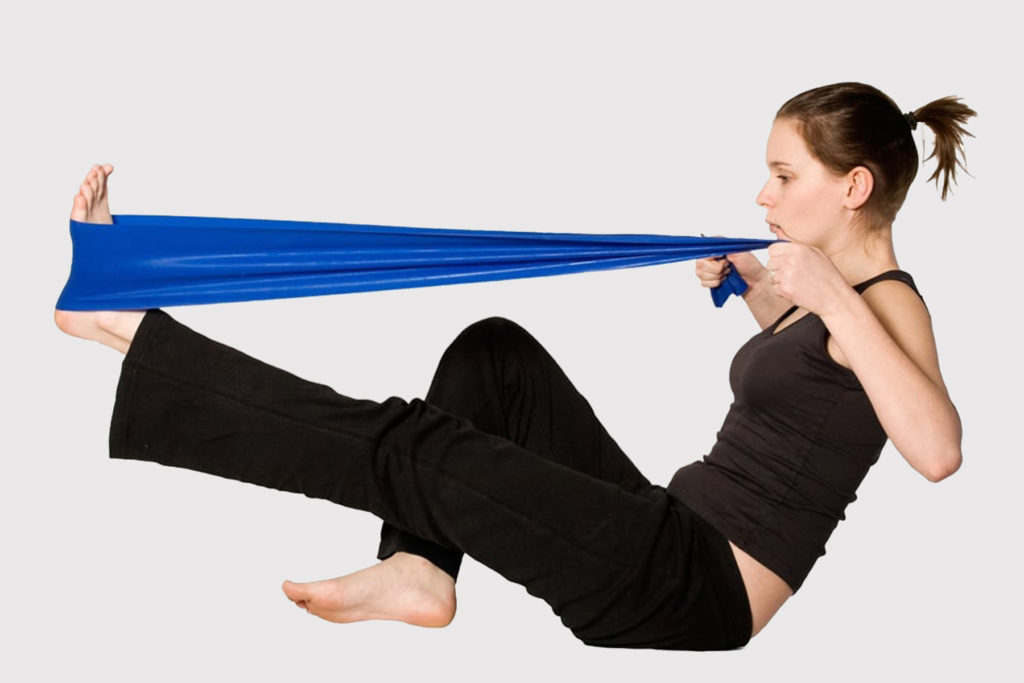 Exercise increases muscle flexibility and strength and promotes healing by increasing blood flow to the injured site. Healthy muscles provide protection to bones and joints. People who suffer from lower back pain are often encouraged to help their own recovery through exercise and physical therapy, but are seldom given the knowledge and tools needed to accomplish this. One of the most crucial parts of a successful treatment plan is what the patient does outside of the clinic. Motivating patients to become active in their care at is essential to full recovery. That is why Exercise Rehabilitation is a key element of our treatment approach.
Exercise increases muscle flexibility and strength and promotes healing by increasing blood flow to the injured site. Healthy muscles provide protection to bones and joints. People who suffer from lower back pain are often encouraged to help their own recovery through exercise and physical therapy, but are seldom given the knowledge and tools needed to accomplish this. One of the most crucial parts of a successful treatment plan is what the patient does outside of the clinic. Motivating patients to become active in their care at is essential to full recovery. That is why Exercise Rehabilitation is a key element of our treatment approach.
Core Stability Training
 Core Stability Training specifically targets the smaller and deeper muscles of the lumbar spine and trunk. The aim of core stability training is to effectively recruit these smaller postural intrinsic muscles and then learn to control the position of the lumbar spine during dynamic movements. 80% of all people will have a low back condition some time in their life. A weakened core is a major contributing factor to low back injuries. Learning core strengthening is easy, and is an exercise that does not take much time to perform every day.
Core Stability Training specifically targets the smaller and deeper muscles of the lumbar spine and trunk. The aim of core stability training is to effectively recruit these smaller postural intrinsic muscles and then learn to control the position of the lumbar spine during dynamic movements. 80% of all people will have a low back condition some time in their life. A weakened core is a major contributing factor to low back injuries. Learning core strengthening is easy, and is an exercise that does not take much time to perform every day.
Heat and Cold Therapy
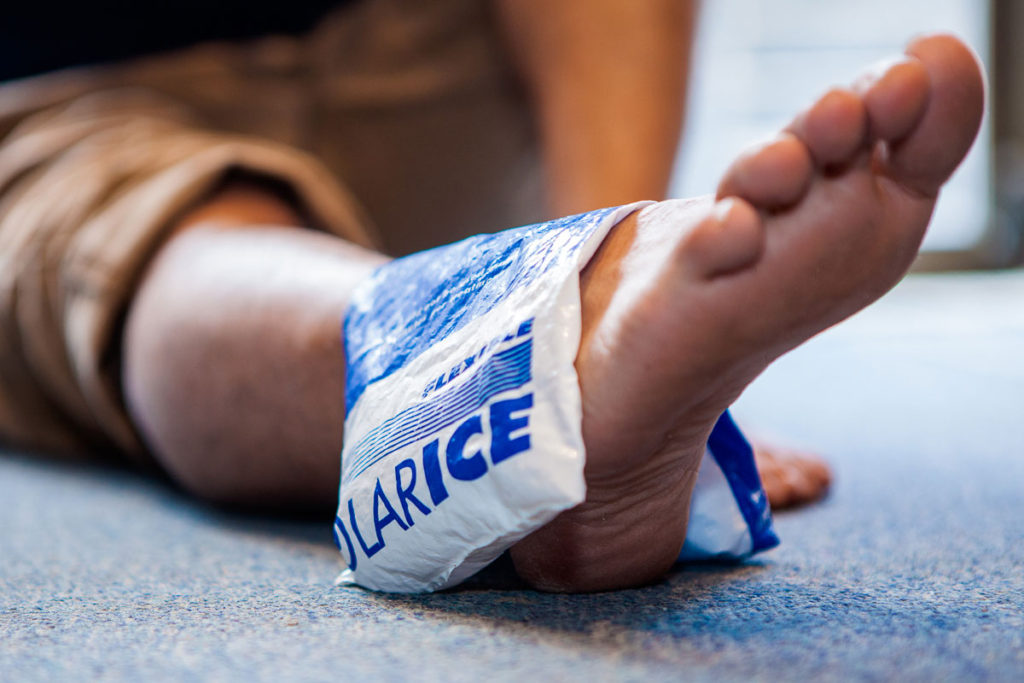 The benefits of heat include: relaxation of tight muscles and tissues, decreased pain, increased blood circulation to the affected area. Patients with chronic muscle strains, spasms, or arthritis often benefit from treatment with moist hot packs. Cold packs are used to treat areas of pain and inflammation. The cold packs are wrapped in towels and applied directly to the treatment area of the patient’s body. Cold therapy decreases inflammation, pain, and swelling. Patients with acute injuries often benefit from cold therapy.
The benefits of heat include: relaxation of tight muscles and tissues, decreased pain, increased blood circulation to the affected area. Patients with chronic muscle strains, spasms, or arthritis often benefit from treatment with moist hot packs. Cold packs are used to treat areas of pain and inflammation. The cold packs are wrapped in towels and applied directly to the treatment area of the patient’s body. Cold therapy decreases inflammation, pain, and swelling. Patients with acute injuries often benefit from cold therapy.
Joint Mobilization
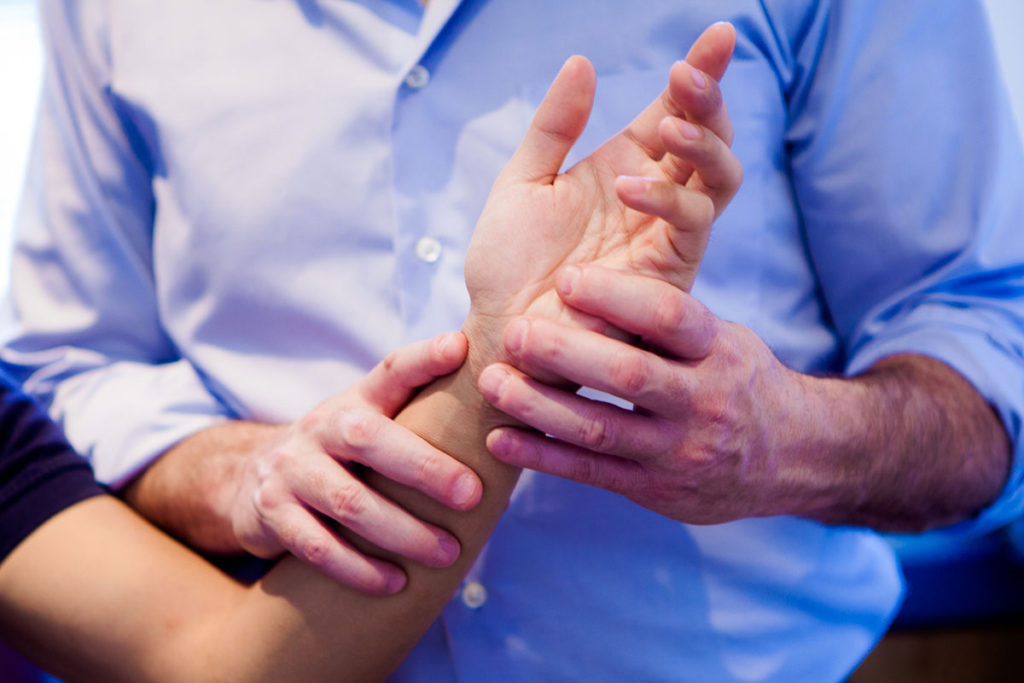 Joint Mobilization is used to restore the natural movement of a joint. When a joint is not moving and functioning properly, inflammation and pain often occur due to the impingement of other structures. Joint mobilizations increase range of motion of a joint and restore balance to the injured area. As we get older, it becomes very important to move the joints. “Motion is lotion” when it comes to joint mobility and function.
Joint Mobilization is used to restore the natural movement of a joint. When a joint is not moving and functioning properly, inflammation and pain often occur due to the impingement of other structures. Joint mobilizations increase range of motion of a joint and restore balance to the injured area. As we get older, it becomes very important to move the joints. “Motion is lotion” when it comes to joint mobility and function.
Does extended insurance cover the treatment?
Yes. WSIB and most insurance providers will recognize Active Release Technique when provided by a chiropractor as a primary health care treatment. A receipt will be issued to you at the end of each treatment. If you don’t have an extended health care plan, save your receipts for income tax purposes.